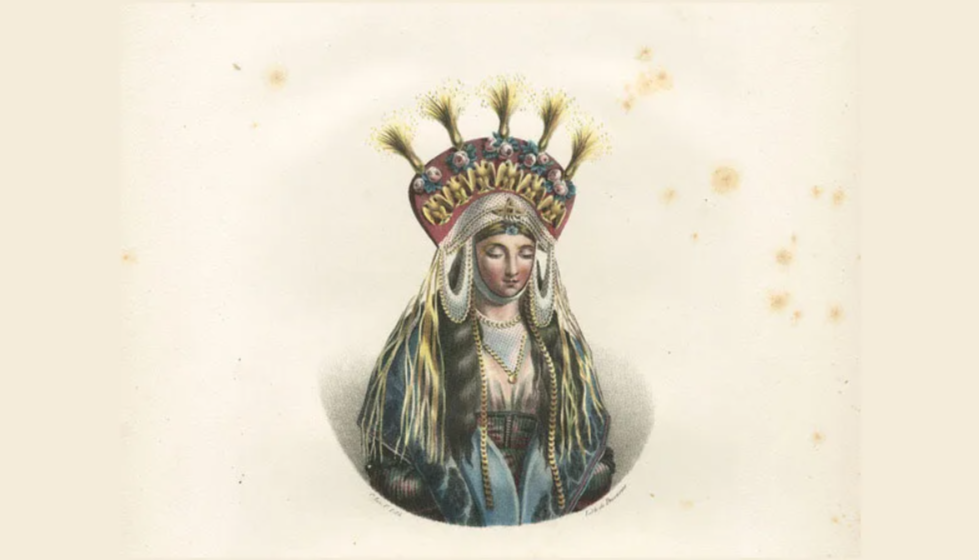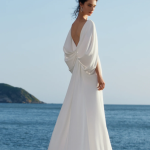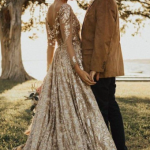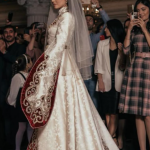Choosing a traditional Greek wedding dress for your special day is not just about style—it’s about embracing history, culture, and timeless elegance. Greek wedding attire beautifully blends ancient heritage with modern fashion trends, creating gowns that resonate deeply with brides who value both tradition and contemporary chic.
The Evolution of Greek Bridal Fashion
Ancient Greek Influences on Wedding Attire
The roots of the traditional Greek wedding dress date back to ancient Greece, where simplicity, grace, and harmony defined bridal aesthetics. Brides typically wore flowing garments known as “chitons” and “peplos,” characterized by their delicate draping and effortless elegance. These gowns were often white or pastel to symbolize purity and harmony. Natural fabrics such as linen and silk were common, decorated modestly with gold or silver accents to represent wealth and prosperity.
From Folk Costumes to Modern Gowns
Over centuries, Greek bridal attire evolved significantly, incorporating elements from regional folk costumes. Each region in Greece developed unique styles, utilizing vibrant colors and intricate embroidery to represent local heritage. Traditional folk dresses often featured layers, complex embroidery, and accessories such as ornate headpieces and jewelry.
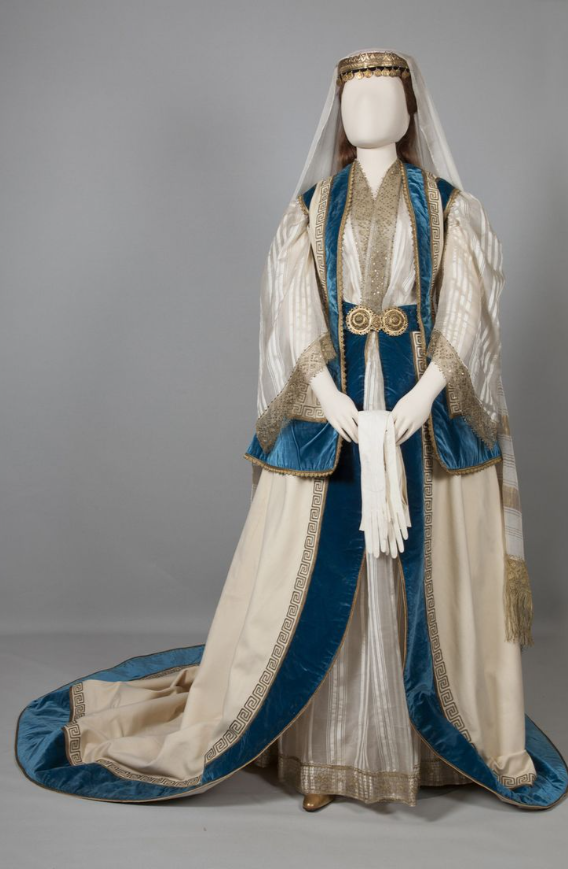
Today, Greek wedding dresses beautifully combine these traditional elements with contemporary fashion. Modern Greek brides often select gowns that retain classic elements like flowing silhouettes, intricate draping, and subtle embellishments, seamlessly merging history with current trends.
Defining Features of a Traditional Greek Wedding Dress
Drapery, Silhouettes, and Fabrics
The hallmark of a traditional Greek wedding dress is its signature drapery, inspired by ancient Greek attire. These gowns often have loose, flowing silhouettes, emphasizing natural beauty and movement. Popular fabrics include chiffon, silk, and soft organza, chosen for their ability to create graceful, fluid draping.
Embellishments, Motifs, and Accessories
Greek wedding dresses frequently incorporate subtle yet meaningful embellishments. Common motifs include laurel wreaths, olive branches, and floral patterns, each symbolizing peace, victory, or fertility. Brides accessorize with minimalistic yet sophisticated jewelry—typically golden necklaces, bracelets, and earrings—to enhance their natural beauty without overshadowing the gown’s simplicity.
Symbolic Colors and Ornamentation
Traditionally, Greek brides preferred shades of white or ivory, colors associated with purity and new beginnings. However, touches of gold and silver ornamentation have become increasingly popular, symbolizing prosperity and luck in marriage. These subtle yet rich details highlight the gown’s elegance and historical significance.
Modern Takes on Greek Bridal Wear
Greek Goddess Inspiration in Contemporary Styles
Modern designers frequently draw inspiration from Greek goddesses, renowned for their elegance, power, and beauty. These contemporary gowns maintain the traditional flowing silhouette and draping techniques, adding innovative elements like open backs, asymmetrical necklines, and delicate embroidery to create a striking yet timeless look.
Blending Traditional and Western Fashion
Brides today often seek dresses that blend traditional Greek elements with Western bridal trends. Such gowns might feature structured bodices combined with flowing skirts, modern lace details alongside classic drapery, or minimalist styles accented by subtle Greek-inspired embroidery. This fusion allows brides to honor their heritage while expressing personal style.
Practical Tips for Choosing a Greek-Inspired Bridal Gown
Fabrics and Details That Reflect Greek Heritage
When selecting a Greek-inspired gown, focus on fabrics that emphasize fluidity and grace, such as silk chiffon, crepe, or georgette. Look for gowns with draped sleeves, pleated skirts, and minimalistic embellishments that evoke ancient Greek attire.
Comfort, Weather, and Venue Considerations
Considering the UK climate, it’s essential to select fabrics and designs suitable for variable weather. Lightweight, breathable materials paired with removable shawls or capes can ensure comfort without compromising the aesthetic. Additionally, matching your gown’s style to the venue—whether an outdoor garden wedding, coastal ceremony, or elegant indoor reception—will enhance both comfort and thematic cohesion.
Frequently Asked Questions (FAQ)
Can I incorporate color into my traditional Greek wedding dress?
Yes! While white and ivory remain popular, subtle touches of pastel shades, gold, or silver embellishments beautifully complement traditional Greek styles.
What accessories should I choose to complete my Greek-inspired bridal look?
Simple gold jewelry, delicate floral crowns, or minimalistic pearl accessories effectively highlight the elegance of a Greek wedding gown without overpowering it.
How can I adapt a Greek-style dress for a UK wedding?
Opt for layered designs, detachable sleeves or capes, and consider practical footwear suitable for UK venues and weather conditions. Adding a stylish wrap or cape can also provide warmth without sacrificing elegance.
Choosing a traditional Greek wedding dress offers brides the opportunity to showcase cultural pride while looking effortlessly beautiful on their special day. By understanding the gown’s historical roots and modern adaptations, you can confidently select a dress that not only reflects heritage but also resonates deeply with your personal style and vision.
